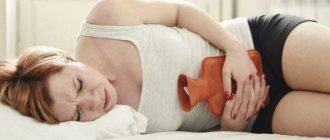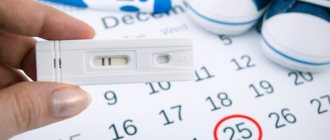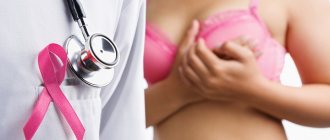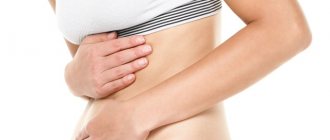Premenstrual syndrome (PMS) is a cyclic symptom complex that occurs two to three days before the onset of menstruation. It manifests itself differently in every woman. While some do not feel significant changes in the body, others suffer from headaches, emotional swings, and swelling. A common symptom is sweating before menstruation. This condition can be alleviated with the help of vitamins and folk remedies.
What does vaginal dryness mean before or after your period?
Most complaints of vaginal dryness relate to the period before or after menstruation. This may be due to slightly altered hormonal balance or poor hygiene. Also, a decrease in the secretion of the vaginal glands can be observed during pregnancy, as well as after the onset of menopause.
In order to determine the true cause of vaginal dryness, you should undergo a series of laboratory tests. In addition to the standard smear for microflora analysis, a woman must donate blood to determine hormone levels. Such an analysis should be done over time in order to identify estrogen deficiency. After all, it is the lack of this hormone that provokes a decrease in the activity of the vaginal glands.
How to eliminate the causes of dryness?
It is easy to understand that inflammatory processes manifested by vaginal dryness should be treated with medication, according to doctor’s prescriptions. Similar treatment is indicated for serious hormonal disorders. However, cases where estrogen deficiency is not clearly expressed and the symptoms of a dry vagina appear in a mild form may be treatable with homeopathic medicines or special remedies created on the basis of natural ingredients.
This gentle therapeutic effect allows you to quickly and safely solve the problem of vaginal dryness. Doctors recommend the following as additional means:
- Complete cessation of bad habits. Smoking and regular drinking of alcohol impairs blood supply to all organs, including the pelvic organs. That is why, within a few months after giving up these habits, a woman will be able to feel a surge of strength and energy, and an improvement in overall well-being.
- Including foods rich in phytoestrogens in the diet. Legumes, soybeans and broccoli fall into this category. Regular consumption of such foods will normalize the level of hormones in the female body.
- Regular sex life. Sex is the best stimulant for developing natural lubrication and improving blood microcirculation.
An additional remedy for eliminating the symptoms of vaginal dryness is various topical moisturizing gels. They are recommended for the correction of physiological conditions: during menopause, during pregnancy, with symptoms of dryness associated with stress or after childbirth.
For example, the intimate moisturizing gel "Ginocomfort", which contains extracts of mallow and chamomile, bisabolol and panthenol, has not only a moisturizing effect, but also an anti-inflammatory and wound healing effect. The use of this gel is recommended daily after hygiene procedures. The undoubted advantage of this product is that specialists from the pharmaceutical company VERTEX worked on its development, after which the gel underwent clinical studies conducted at the Department of Dermatovenereology with the clinic of St. Petersburg State Medical University under the leadership of A. V. Ignatovsky and E. V. Sokolovsky. Research has proven the high moisturizing properties of the product, well tolerated by women and absence of allergic reactions. The gel has the necessary documents and certificates.
Why do muscles hurt before menstruation?
The period when a person moves from childhood to adulthood is called adolescence.
The body of a teenager undergoes enormous changes, for example, in girls, the mammary glands swell, hair growth accelerates in different parts of the body, rashes appear, and monthly uterine bleeding begins. Frequently, critical days are accompanied by pain in the legs, and there are several reasons for this: Emotional overexcitation negatively affects the condition of the entire body.
- Excessive activity of the nervous system. As a result, girls become whiny, easily give in to offense and, trying to show their maturity, often become disobedient and difficult to control. As a result, a system consisting of nerve cells transmits its tension to the internal organs and systems of the human body. Then teenage girls may complain that their joints hurt, their legs become swollen and feel heavy.
- Painful discomfort of aching nature. Most of the fairer sex complains of pain in the uterine area. Often the pain intensifies and moves to the back, lumbar spine, creating a load on the feet.
- Active skeletal growth. In adolescents, there is a rapid growth spurt in the growth of the bone support of the body, but at the same time the network of blood vessels does not develop so sharply and therefore the limbs are not sufficiently supplied with blood. In addition, the receptors are irritated, causing numbness and aching pain.
Pain in the joints during the onset of menstruation in adolescence can go away on its own and usually this happens immediately after hormonal levels are restored.
In adults
Knee pain, twisting and aching legs before menstruation can occur not only in teenagers, but also in older girls. There are several reasons why women have to deal with joint pain:
- Premenstrual syndrome. There is a jump in hormones and, as a result, disrupts the outflow of fluid in the body. Excess water accumulates and manifests itself in the form of edema, as a result of which an unusually large load is placed on the lower limbs and they begin to ache.
- Diseases of the spinal column. Some pathologies of the spine are localized in the lower part and therefore patients note painful discomfort in the legs.
- Operations. Women who have given birth or undergo an abortion or caesarean section often experience joint pain during menstruation. Medical staff explain this relationship by the fact that during surgery or childbirth, irritation of receptors in the pelvic area occurs, and this entails changes in blood circulation. Therefore, blood fluid may not reach the extremities, and they begin to become numb, swollen, or painful.
- Gynecological pathologies. Advanced diseases of the female genital area are accompanied by severe pain discomfort, which can often radiate to the lower extremities.
During menopause
Women who are in menopause often complain of pain in bone joints before menstruation. During menopause, hormonal levels change and many vital functions decrease.
Hormonal imbalance also affects the condition of the knees, feet, and legs and manifests itself in the form of heaviness, swelling and painful discomfort. It is worth noting that joint pain before “red” days is usually systematic and can precede severe pathologies.
That is why doctors strongly recommend that you contact a medical facility at the first appearance of joint pain.
In women of childbearing age
After fifty, many body functions slow down, which significantly affects the development of diseases and various pathologies. Blood circulation and metabolism slow down. The legs simply may not have enough blood or nutrients. And since the immune system is weakened before menstruation, the pain is felt much more intensely.
REMEMBER! No matter what age the pain appears, it should not be ignored. Perhaps these are the prerequisites for a developing disease. You should definitely consult a doctor if the pain becomes regular.
Several ways to relieve pain:
- Make contrasting foot baths;
- Wear comfortable shoes;
- Play sports (strengthen leg muscles);
- Do massage and self-massage.
Judging by the fact that you are reading these lines now, victory in the fight against joint pain is not yet on your side...
Constant or periodic pain, crunching and palpable pain during movement, discomfort, irritability... All these symptoms are familiar to you firsthand.
Often, during menstruation, women undergo a lot of inconvenience. Skin rashes and excessive sweating, swelling of the face and limbs and of course pain. Before menstruation, heaviness is felt in the chest, lower abdomen and legs. This is, as a rule, a physiological course, but can also be a consequence of pathological processes that worsen during critical days.
Women, when they approach fifty years of age, lose their reproductive function. That is, the reproductive ability of the body gradually fades away and the woman begins premenopause.
During this period, the menstrual cycle becomes irregular and menstruation becomes rare. Before their onset, women may feel false symptoms of the onset of menstruation, that is, pain in the head, back, abdomen and legs, but there is no bleeding.
And in another case, nothing portends about critical days, and they come without any special symptoms. During menopause, periods may not appear for a whole year and then, if they finally do not appear, it means that postmenopause has occurred, that is, a complete absence of monthly female functionality.
But at the same time, for some reason my legs continue to hurt or this unpleasant sensation appeared for the first time.
If you feel constant discomfort in your body, then life will inevitably become unbearable.
What to do?
It is necessary to begin any therapeutic measures only after consulting a doctor and undergoing a diagnostic examination.
If joint pain during PMS is not preceded by serious illnesses, then it will be enough to take measures to relieve pain discomfort.
And contrast baths with the addition of herbal decoctions, massages of the lower extremities and sports, with the help of which the leg muscles are strengthened, will help with this. Plus, you need to give up uncomfortable tight shoes and change high-heeled shoes to low-heeled ones.
Antispasmodics and non-steroidal anti-inflammatory drugs can relieve severe pain. Effective drugs are Papaverine, Spazmalgon, Ketanov, Ibuprofen and No-shpa.
Stronger painkillers should be taken only as prescribed by a doctor, as they have a considerable list of side symptoms and can negatively affect the central nervous system and gastrointestinal tract.
What to do?
Joint pain due to PMS can be eliminated by following these recommendations:
Source: https://artritox.ru/bolezni/pochemu-pered-mesyachnymi-bolit-vse-telo.html
Dryness of the female genital organs, video
is not responsible for the accuracy of the information presented in this video clip. Source – vrach85
- NEW OPPORTUNITIES IN THE THERAPY OF VULVA AND VAGINA PATHOLOGY. Ignatovsky A.V., Sokolovsky E.V. // Journal of obstetrics and women's diseases. – 2009. – No. 1. – pp. 56-59.
- PROBLEMS OF UROGENITAL DYSTROPHY IN WOMEN OF REPRODUCTIVE AND PERIMENOPAUSAL AGE. Karahalis L. Yu // Kuban Scientific Medical Bulletin. – 2007. – P. 63-68.
- THERAPY OF UROGENITAL DISORDERS CAUSED BY ESTROGEN DEFICIENCY. Serov V.N. // Obstetrics, gynecology and reproduction. – 2010. – No. 1. – P. 21-35.
Bacterial vaginosis (clinic, diagnosis, treatment). Kira E. F. // Author's abstract. dis. Dr. med. Sci. - St. Petersburg, 1995. - P. 44.
Urogenital infections in women. Kisina V.I., Zabirov K.I. // M.: MIA,. – 2005. – P. 12.
Terminology and classification of bacterial infectious diseases of the female genital organs. Kira E.F., Tsvelev Yu.V. // Vestn. Ross. Association of Obstetricians and Gynecologists. - 1998. - No. 2. — P.24–26.
Popular questions
Oksana, hello! For six months now I have had dry vulva, white thick discharge, like kefir, with a bitter or sour odor, and lack of lubrication during sex. It seems like all the symptoms of thrush, but my smears are clean. I rented it out several times. The mucous membrane became very sensitive in the morning. Even if you lubricate it with Ginocomfort gel, the entire surface burns. It's like it was scratched there. From March to January I took the COC Yarina+, but then stopped because... I thought it was a side effect. Please tell me how can I find out the cause of this condition?
What type of discharge occurs before menstruation?
All vaginal discharge before menstruation is divided into two categories: normal and pathological.
The first group includes those discharges that are observed in a healthy female body. They are called physiological.
In most cases, such leucorrhoea has a mucous structure and a pale yellow tint. Closer to the onset of menstruation, they may acquire a darker shade. There should not be any unpleasant odor.
A pathological secretion before menstruation indicates a developing disease, an infectious lesion or a malfunction in the cycle. It can have a different smell and color, differ in intensity, structure and consistency.
If there is discharge before menstruation, and it is accompanied by unpleasant symptoms (pain, itching, burning), the woman is advised to consult a doctor as soon as possible for an examination.
It is impossible to delay dealing with this condition, since in the absence of treatment, many infectious pathologies become chronic, which greatly complicates the process of getting rid of them.
What is normal discharge before menstruation?
Discharge before menstruation normally has the following characteristics:
- Smell. A slightly sour smell is allowed, however, it is better if it is completely absent.
- Color. Usually the mucus is clear or white in color. Mucus stains on panty liners may take on a yellowish tint. This is considered the norm.
- Consistency. It depends on the cycle. Immediately after menstruation, leucorrhoea may be stretchy and runny, however, closer to the second phase of the cycle, it should take on a creamy appearance.
- Quantity. Should be no more than 4 ml per day. This can be determined by looking at your panty liner: if the size of the stain on it does not exceed 5 cm, then there is no need to worry.
Normal discharge before menstruation is not felt by a woman in any way and does not cause her discomfort. There should be no additional symptoms such as itching or pain.
How does discharge change before menstruation?
The nature of discharge before menstruation may vary. This is justified by changes in a woman’s hormonal background, as a result of which vaginal mucus can change its volume, color and consistency.
For example, the first menstruation in girls provokes the appearance of vaginal leucorrhoea 2-3 months before the menstruation itself. They are liquid and not plentiful. They are distinguished from infections of the reproductive system by a more transparent structure and the absence of a pathological pungent odor.
Discharge before menstruation in a woman occurs due to an increase in the level of the hormone progesterone in the body. Estrogen is produced in smaller quantities. This is directly reflected in the color and consistency of the leucorrhoea.
Why does the body “burn” before menstruation?
PMS is often accompanied by a feeling of heat. Especially if it manifests itself as redness of the face. Such a feeling can cause awkwardness in society and a kind of discomfort.
Important! Prolonged activity may cause facial flushing.
The body begins to “burn” a few days before the start of menstruation. The reason for this is hormonal changes.
The following psychological and physiological factors can cause facial redness:
- depression;
- stress;
- feeling of shame;
- experiences;
- feeling scared;
- fluctuations in blood pressure.
During a period of fear, a woman experiences a surge of adrenaline, which can lead to an unpleasant feeling. Rage and discontent can also negatively affect the nervous system. Therefore, it is these factors that cause redness of the skin, especially on the face.
Quite often, women complain that two or three days before menstruation they feel hot. This is a normal phenomenon and may be caused by high temperature and dry air in the room or inappropriate weather conditions.
How many days before menstruation does discharge appear?
Discharge in women before menstruation may appear a week before. As a rule, the imminent onset of menstruation is felt by swelling of the mammary glands, pulling sensations in the lower abdomen, as well as changes in vaginal secretion.
It is important to note that early periods can change the nature of the discharge. This is considered the norm.
Discharge the day before your period
Discharge before menstruation increases in quantity within 1 day and leads to wetness of the labia. They become more cloudy, acquiring a brownish tint.
You need to worry if, before your period begins, a woman experiences discharge with a foamy structure or an unusual shade (greenish, bright yellow, earthy). This may indicate a bacterial infection.
Discharge 2 days before period
A couple of days before the start of menstruation, women may experience discharge with dark blood. People call them “spotting”, since their number is negligible.
This is a completely normal condition that occurs in most women. If this type of vaginal discharge appears, it is better to refuse sexual intercourse so as not to introduce extra germs to yourself.
Discharge 3 days before period
If your period is due within the next three days, the mucous secretion may take on a thick, creamy consistency. If it has a beige tint, there is no need to worry.
It should be noted that profuse and thick leucorrhoea with a cheesy consistency may indicate candidiasis. This is a disease that can be easily contracted both through domestic and sexual contact. If you suspect such a disease, you should consult a doctor.
Discharge 4 days before period
4 days before the upcoming menstruation, the leucorrhoea becomes viscous and thick. Instead of a transparent color, they may appear white or yellow, which will be noticeable on the panty liner.
When using tampons, they need to be updated even more often. Otherwise, pathogenic microflora begins to develop in the vagina.
What kind of discharge should you have the week before your period?
If your period is due in the next week, the discharge does not always have obvious signs of imminent menstruation. They can be stretchy or mucous (sometimes watery).
Normally, this secretion is transparent and looks like jelly.
Why does my whole body hurt before my period?
At different ages, women experience joint pain before menstruation of a different nature. They may be associated with changes in hormonal levels, or they may be symptoms of inflammation and infections in the reproductive organs.
The joints of the lower extremities are more susceptible to this manifestation. To make sure that this is not a disease or a sign of pregnancy, you need to see a doctor.
Prevention of painful sensations consists of proper nutrition, bed rest, taking soothing teas and regular exercise.
Classification of the syndrome
If your stomach hurts a week before your period, what could this mean? Only your gynecologist will give a specific answer. After all, dysmenorrhea can be caused not only by natural, harmless, but also by pathological causes.
If a woman is healthy, but every menstruation results in pain for her, there are two main expert explanations:
- Why did my lower abdomen hurt before my period? The first position takes into account the importance of the psychological factor, as well as the physiological type of the woman. Mostly young girls of asthenic type suffer from pain. They have a neurasthenic or labile-hysterical personality characteristic. Accordingly, anticipation of the upcoming menstruation can cause an anxiety-neurotic disorder, which leads to a psychogenic decrease in the pain threshold. This means that even minor pains are perceived by the body as stronger than they actually are.
- A few days before menstruation, my lower abdomen hurts. What could this mean? Another explanation is based on the fact that menstrual blood contains an increased concentration of prostaglandins. Those biologically active substances that regulate both the contraction of the uterus and the functioning of the vessels of this organ, the intensity of pain perception, etc. And excessive production of these substances can lead to negative consequences for the body: deficiency of uterine circulation, sharp spasms of the muscles of the organ, and an objectively strong painful sensation in the lower abdomen.
My lower abdomen hurts a lot before my period. This is not a temporary disorder. Dysmenorrhea is listed in ICD-10, the International Classification of Diseases. In the directory it is divided into several categories:
- Primary (or functional). If before the first menstruation the lower abdomen hurts (as during subsequent menstruation), this is a completely non-pathological syndrome in this category. This is only an individual process of the menstrual cycle that does not require intervention or treatment.
- Recycled (or organic). If your lower abdomen hurts a week before your period, this may also indicate a pathological cause of the syndrome. In particular, it can be caused by diseases and structural changes in the reproductive system. For example, endometriosis, various inflammatory processes affecting the genitals, abnormalities of the genital organs, uterine fibroids, inflammation of the fallopian tubes.
- Unspecified (menstrual pain of unknown origin).
Also, according to the degree of severity, there are four types of dysmenorrhea:
- Weakly expressed.
- Moderately expressed.
- Strongly expressed.
- Maximum degree of disease.
Treatment of primary and secondary forms of dysmenorrhea
Since in the secondary form of the disease the cause of pain during menstruation is precisely the underlying disease, dysmenorrhea is eliminated by its complete cure. The doctor prescribes the patient the necessary treatment for this.
As for primary dysmenorrhea, adjusting your diet and lifestyle helps get rid of the unpleasant symptom. According to the results of studies and surveys, it manifests itself most clearly in girls and women whose work is associated with psychological stress and stress. And also for patients who, while working, are forced to remain in the same static position for a long time.
It was also found that women with pronounced symptoms of dysmenorrhea most often show signs of hypovitaminosis - a lack of necessary minerals and vitamins for the body. Therefore, pain prevention is often achieved by taking vitamin complexes as prescribed by a doctor. In particular, this method is recommended for girls who are not sexually active and with mild symptoms of dysmenorrhea.
For women, as a preventative measure, gynecologists often prescribe COCs - combined oral contraceptives. These medications can reduce the amount of bleeding during menstruation due to suppression of ovulation and endometrial growth. In some cases, COCs are combined with analgesics.
Also, for primary dysmenorrhea, the following may be prescribed:
- Sedative medications of varying intensity - from herbal supplements to tranquilizers.
- Antioxidants that can normalize the production of prostaglandins. In particular, vitamin E.
- Magnesium citrate, magnesium absorbate and other magnesium preparations, which simultaneously reduce the symptoms of dehydration and alleviate the feeling of anxiety.
- In some cases, patients are offered phytoestrogens as an alternative to hormone replacement therapy. However, the opinions of medical specialists on these funds are contradictory.
In addition, observations of girls and women who have adopted an active lifestyle, jogging, and going to the gym, have shown that periodic exercise can reduce pain during menstruation.
Symptoms of leg pain during menstruation
Almost every woman experiences a painful syndrome before menstruation. The pain is localized in the mammary glands, lower abdomen and even in the joints. At the same time, representatives of the fairer sex note depression, excessive sweating, irritability, and the face becomes covered with acne.
All this is called premenstrual syndrome, which worries both young girls and mature women.
But it is worth understanding that joint pain, which usually occurs in the lower extremities, has various causes, so if this symptom regularly appears before or during menstruation, it is recommended to consult a doctor.
In teenagers
Emotional overexcitation negatively affects the condition of the entire body.
- Excessive activity of the nervous system. As a result, girls become whiny, easily give in to offense and, trying to show their maturity, often become disobedient and difficult to control. As a result, a system consisting of nerve cells transmits its tension to the internal organs and systems of the human body. Then teenage girls may complain that their joints hurt, their legs become swollen and feel heavy.
- Painful discomfort of aching nature. Most of the fairer sex complains of pain in the uterine area. Often the pain intensifies and moves to the back, lumbar spine, creating a load on the feet.
- Active skeletal growth. In adolescents, there is a rapid growth spurt in the growth of the bone support of the body, but at the same time the network of blood vessels does not develop so sharply and therefore the limbs are not sufficiently supplied with blood. In addition, the receptors are irritated, causing numbness and aching pain.
Pain in the joints during the onset of menstruation in adolescence can go away on its own and usually this happens immediately after hormonal levels are restored.
In adults
Girls with an established, constant cycle can also feel discomfort in the joints.
Knee pain, twisting and aching legs before menstruation can occur not only in teenagers, but also in older girls. There are several reasons why women have to deal with joint pain:
- Premenstrual syndrome. There is a jump in hormones and, as a result, disrupts the outflow of fluid in the body. Excess water accumulates and manifests itself in the form of edema, as a result of which an unusually large load is placed on the lower limbs and they begin to ache.
- Diseases of the spinal column. Some pathologies of the spine are localized in the lower part and therefore patients note painful discomfort in the legs.
- Operations. Women who have given birth or undergo an abortion or caesarean section often experience joint pain during menstruation. Medical staff explain this relationship by the fact that during surgery or childbirth, irritation of receptors in the pelvic area occurs, and this entails changes in blood circulation. Therefore, blood fluid may not reach the extremities, and they begin to become numb, swollen, or painful.
- Gynecological pathologies. Advanced diseases of the female genital area are accompanied by severe pain discomfort, which can often radiate to the lower extremities.
We suggest you familiarize yourself with Pain-relieving suppositories for hemorrhoids and fissures
What kind of discharge should there be after menstruation?
Discharge after menstruation becomes darker in color. At the end of this natural cycle, the level of blood clotting increases, causing it to be released more slowly.
Thanks to this process, the discharge becomes brown. If they do not have a pathological smell, then this is normal. Otherwise, such a sign is an indication for analysis for infectious and bacterial lesions (herpes, chlamydia, gardnerella, etc.).
Symptoms and causes of pathological discharge
The following are the most common types of pathological discharge in women, which can be observed before menstruation occurs:
- Mucus and sticky discharge. In small quantities they are regarded as normal, however, if such a secretion is very voluminous and is accompanied by a foul odor from the vagina, this may indicate an inflammatory process and infection through unprotected sexual intercourse.
- Cinnamon or black discharge. If they are observed 2-3 days before menstruation, then this is not scary, because this is how the endometrium is renewed. You need to be wary if abundant clots of black mass appear 7-10 days before menstruation. This may indicate polyposis or uterine fibroids.
- Bloody secretion. It is considered especially dangerous when there is a profuse discharge of scarlet blood, which is similar to hot flashes. In this condition there is a high risk of ovarian dysfunction.
- Bright yellow or green mucus. It should immediately alert you, since often such a sign indicates vaginitis, cervical erosion or a sexually transmitted disease. Before menstruation, such a secretion may disappear along with pus.
- White secretion, which is accompanied by severe itching in the perineum, sour odor and burning sensation. A similar sign indicates bacterial vaginosis caused by a fungus of the genus Cand > Copious pink discharge. This is a clear symptom of endometriosis, which may be accompanied by fever, unpleasant vaginal odor and weakness.
Most often, pathological discharge is associated with the following gynecological diseases:
- Vaginitis, leading to irritation of the vagina.
- Inflammation of the cervix.
- Endometritis.
- Cystic formation in the uterus or its appendages.
- Candidiasis.
If your period lasts more than seven days, and immediately after that a woman has unusual discharge, you need to take a pregnancy test. There is a risk that fertilization will be ectopic. In this condition, there is no point in delaying the examination.
Additional pathologies that can affect the nature of vaginal secretions are:
- developing cancer tumors in the body;
- diabetes mellitus, leading to serious metabolic disorders;
- failure in the endocrine system (menstruation may be absent);
- severe infectious processes in the kidneys or bladder.
Pain and discomfort during menstruation: how to help yourself
At different ages, women experience joint pain before menstruation of a different nature. They may be associated with changes in hormonal levels, or they may be symptoms of inflammation and infections in the reproductive organs.
The joints of the lower extremities are more susceptible to this manifestation. To make sure that this is not a disease or a sign of pregnancy, you need to see a doctor.
Prevention of painful sensations consists of proper nutrition, bed rest, taking soothing teas and regular exercise.
1Take painkillers
To relieve pain during intense menstruation, it is best to use non-steroidal anti-inflammatory drugs.
Such drugs reduce the body's production of prostaglandins, which cause pain and reduce inflammation.
Follow the dosage indicated in the instructions for the medicine and be sure to make sure that you have no contraindications to them, for example, you have problems with blood clotting.
In addition, gynecologists often prescribe oral contraceptives to women with difficult menstruation and severe pain.
Remember that pain cannot be tolerated.
https://youtu.be/4GXHMQm8McM
Doctors' opinion
If you don’t know what to do if your lower extremities hurt during your period, then start solving the problem with a visit to the doctor. PMS syndrome, as a cause of leg pain, occurs very often in women. But this can also be caused by other diseases. Experts once again remind you that there is no need to self-medicate.
Taking any medications, including the use of folk remedies, must be agreed with a doctor. It is also not recommended to use reviews from the Internet about why legs hurt during menstruation. A gynecologist, neurologist, oncologist and traumatologist are the main specialists who should examine you if you complain of leg pain during, before or after your period.
In case of varicose veins, when the legs hurt, a doctor should also take care of them.
3Drink enough water
During menstruation, the female body requires a little more water than usual.
In addition, oddly enough, drinking a little more water during menstruation can reduce swelling.
It is important to drink 6-8 glasses of water daily, especially during menstruation, since many women during this period also experience such an unpleasant symptom as diarrhea, which means that dehydration must be avoided.
Remember that alcohol promotes fluid retention in the body and is best avoided during menstruation.
Main reasons
articles:
There is no clear answer to the question of why legs sometimes or regularly hurt when menstruation occurs.
In teenage girls
Puberty is a rather intensive process that brings with it many changes for a teenager’s life. It is during puberty that girls first experience the menstrual cycle, or, simply put, periods.
In the period from 10-11 years, the onset of menstruation is considered early. At this age, the child grows rapidly. This affects both bone growth and the entire muscular system.
And with the arrival of critical days, the child’s age simply does not correspond to his already mature reproductive system. Such a mismatch can cause a disruption in blood circulation and even the innervation of muscle tissue.
As a result, discomfort occurs in the pelvis and legs.
After the menstrual cycle stabilizes, pain in the lower extremities will be almost unnoticeable or even stop completely.
Diagnostics
For most women, menstruation is accompanied by pain that does not require treatment. In case of severe, prolonged symptoms, it is necessary to consult a specialist to find out the causes of this condition. Diagnosis begins with collecting anamnesis. The doctor will find out:
- the nature and duration of the pain syndrome;
- features of the menstrual cycle;
- contraceptive methods used;
- having problems conceiving;
- the presence of inflammatory processes in the genitourinary system.
Subsequent diagnostics include a gynecological examination of the woman in a chair, ultrasound of the pelvic organs, mammography of the mammary glands, which help to establish:
- condition of the appendages, uterus, breasts;
- the presence of inflammatory processes;
- abnormalities in the external genitalia;
- the fact of the development of neoplasms in the breast and uterus;
- changes in the position of organs.
To identify the causes of pain before the onset of menstruation, laboratory tests are required, which include:
- a general blood test to determine the presence of an inflammatory process;
- examination of vaginal smears for pathogenic microflora;
- blood chemistry;
- bacteriological culture to identify the causative agent of infection and its sensitivity to drugs;
- checking hormones according to the phases of the menstrual cycle;
- tests for tumor markers.
Nausea during menstruation
High fever during menstruation may result from an infection. During menstruation, the uterus opens slightly, making it easier for bacteria to enter. For this reason, many women prefer to use pads rather than tampons. During this period, it is very important to monitor personal hygiene.
Temperature during menstruation may indicate the presence of inflammatory processes in the intestines. After all, women often suffer from diarrhea during this period. And the increase in temperature in this case is the reason for a thorough examination.
Approximately in the middle of the monthly cycle, ovulation occurs, during which a phenomenon such as an increase in temperature is observed quite often. Girls who monitor changes in basal temperature can determine the most suitable moment for conception.
Another reason why pain and high temperature may appear during menstruation is pregnancy. If these symptoms occur, perform a special test, and if the result is positive, consult a doctor to rule out the presence of an ectopic or frozen pregnancy.
The last reason for increased temperature during menstruation is early menopause.
- exercise vigorously or experience other physical activity. Sports exercises during menstruation should be moderate, only then will they be beneficial: they will help get rid of pain and improve your mood. And excessive exercise can increase bleeding;
- visit swimming pools, baths and saunas. Heat treatments increase blood circulation, and as a result, bleeding may increase. In addition, on critical days, the risk of introducing an infection into the body increases. Therefore, these procedures are best replaced with a shower;
- drinking alcohol. Alcoholic drinks increase blood pressure, which can lead to poor health and increased bleeding;
- eat wrong. Poor nutrition during menstruation can cause nausea, weakness and abdominal pain. On critical days, you need to eat foods that contain magnesium, calcium, and fiber. Porridge, chicken, fish, or mint and chamomile tea are the best diet during menstruation. It is not recommended to consume spicy, sweet, salty, fatty foods during this period;
- have sex without a condom. There is no categorical prohibition on sexual relations during menstrual periods. But the high risk of infection entering the uterus should be taken into account. It is for this reason that during sexual intercourse during this period it is best to use a condom, even if you have a regular partner;
- take certain medications. If you need to take any medications during your period, be sure to consult your doctor about this. It is important to know that drugs made on the basis of acetylsalicylic acid (for example, aspirin) can significantly thin the blood. Thus, taking aspirin during your period will only prolong it. To reduce pain during menstruation, take medications such as ibuprofen and paracetamol;
- carry out any operations. The fact is that during menstruation, blood does not clot well, and as a result, bleeding may occur during surgery;
In addition, during menstruation you should not do perm, lifting, skin tightening, or dye your hair, as due to temporary changes in hormonal levels, the result may be unexpected.
If you experience nausea and fever during menstruation, you should consult a doctor. After the necessary examinations and tests, you will be prescribed treatment, which will depend on the causes of the illness.
Often, to eliminate nausea and high fever, anti-inflammatory drugs (ibuprofen, paracetamol) and antispasmodics, which include no-spa and drotaverine, are prescribed. Sometimes the gynecologist may also prescribe antacid medications.
Many women suffering from nausea successfully use the drug Mastodinon, which contains a squeeze from the medicinal plant prutnyak. This plant restores the balance of hormones in the body.
Antibiotics are prescribed to treat ailments caused by various infections.
It is very important to create the most comfortable conditions for your own body during critical days in order to make it easier to endure this difficult period of life.
Dysmenorrhea
Dysmenorrhea (algomenorrhea, algomenorrhea) is characterized by painful menstruation, which can be present for just a day or the entire period of menstruation. In some patients, malaise begins a few days before menstruation, but is not a symptom of PMS.
The risk group is girls and women aged 13 to 45 years. Due to the individual characteristics of the body, sensations manifest themselves in different ways. Based on their location and additional symptoms, the cause of the disorder can be identified. But treatment is selected only after a comprehensive examination.
It is important to contact specialists in a timely manner, because painful contractions in the lower abdomen and tingling in the lower back may indicate serious gynecological diseases. And such violations are easier to eliminate in the first stages of development.
Classification of dysmenorrhea
There are two forms of the disease: primary (functional) and secondary (acquired). If the functional form of the disorder is almost never associated with gynecological pathologies, then acquired dysmenorrhea indicates negative changes in the pelvic organs and diseases not only of the reproductive system, but also of other organs.
Primary form
Pain syndrome is observed in teenage girls in the first three years of the formation of the menstrual cycle. Painful periods are not inherently dangerous and do not indicate an independent gynecological disease.
Primary algodismenorrhea does not always occur with the first menstruation. Sometimes severe symptoms begin to appear only with the beginning of ovulatory cycles. These sensations do not affect performance and do not cause severe anxiety. The following clinical picture is noted:
- menstruation proceeds normally (minor delays);
- the pain is weak, most often aching, but not cutting;
- no need to take painkillers;
- There are no additional symptoms.
Among the causes of pain during menstruation in primary dysmenorrhea, it is worth highlighting:
- abnormal development of the genital organs;
- hormonal imbalance;
- increased production of prostaglandins and thromboxanes;
- neurological disorders.
During menstruation, severe pain is not the only complaint of patients with functional algomenorrhea. Other problems complete the picture:
- mitral valve prolapse;
- vegetative-vascular dystonia;
- myopia;
- scoliosis;
- flat feet.
Secondary form
The diagnosis of secondary dysmenorrhea is most often made in women aged 25-30 years, when the occurrence of symptoms during menstrual periods is provoked by diseases or pathological changes in the structure of the organs of the reproductive system.
In most cases, nulliparous women or girls who have terminated their pregnancies several times are at risk. But after childbirth, the situation often improves, and problems with menstruation go away on their own.
Acquired dysmenorrhea is characterized by the following symptoms:
- Aching pain before menstruation is practically not felt.
- The maximum intensity occurs on the second or third day of the cycle.
- Spasms are observed systematically, the stomach suffocates.
- Suddenly begins to pull and ache during physical activity.
Additional symptoms include:
- general weakness and dizziness;
- headaches during menstruation;
- nausea and vomiting;
- loose stools;
- heart rhythm problems;
- increased sweating;
- pain in joints and muscles throughout the body;
- psycho-emotional problems;
- increased body temperature;
- scanty or heavy periods.
If, over the years, minor discomfort turns into very painful menstruation, then the disease is called decompensated. With a stable clinical picture (pain with the same intensity), dysmenorrhea is compensated.
Source: https://pol5.ru/zabolevaniya/lomota-v-tele-pri-mesyachnyh.html
When to see a doctor
You should contact a specialist when menstruation, and the period before its onset, is accompanied by the following symptoms:
- burning and stinging during urination;
- unpleasant pulling or stabbing pain in the lower abdomen;
- discomfort during sex;
- long periods with heavy blood loss, as well as uterine bleeding between cycles;
- itchy sensations in the perineum;
- the appearance of small formations on the cervix or vagina (identified during examination by a specialist);
- nausea, pallor and fever.
Is fever a disease or normal?
We got acquainted with the main reasons for the increase in temperature before menstruation. The main reason is a change in the amount of estrogen in the reproductive system.
| Norm | Reason to see a doctor |
| The temperature is not higher than 37.5 degrees. | Temperature above 37.5 degrees. |
| Over the age of 35, fever before menstruation is normal. | Fever is a regular symptom of PMS up to age 35. |
| Doctors conducted an examination and found no pathologies. | The elevated temperature lasts for more than a day. |
| Symptoms do not coincide with other diseases. | The symptoms were associated with serious illnesses. |
Important! Don't delay going to the doctor. Diseases develop quickly.
What is premenstrual syndrome
During the menstrual cycle, the ratio of sex hormones - estrogen and progesterone, produced in the ovaries, changes. This is reflected in the state of general hormonal levels.
After ovulation, the so-called luteal phase begins, which precedes the onset of menstruation. Preparation for it begins in the body in advance. Under the influence of hormones, changes occur in the condition of the mammary glands and genitals. The brain and central nervous system react to hormonal processes.
Most women experience characteristic pre-menstrual symptoms as a result. For some, they begin 2 days before menstruation, for others – 10. Disorders appear with varying degrees of severity. With the onset of critical days, they disappear. These symptoms are collectively called premenstrual syndrome (PMS). It has been noticed that PMS is stronger in women who suffer from gynecological or other diseases.
Night shift work, exposure to harmful substances, lack of sleep, poor diet, troubles and conflicts are all factors that increase ailments before menstruation.
Note: There is a theory that discomfort before menstruation is the body’s reaction to the lack of conception, which is the natural completion of the physiological processes occurring in the female reproductive system.
Menstruation and PMS
The reproductive function of the female body works to procreate. Any changes in the functioning of the reproductive system affect the general state of health. At the age of 11-13 years, girls begin puberty, which is accompanied by menstruation, signaling the beginning of the menstrual cycle. From now on, menstruation will occur monthly.
Menstruation is the beginning of a new and the end of an old menstrual cycle. During this period, the body is cleansed of exfoliated endometrium and unfertilized egg. The duration of the cycle is individual - 21-35 days, menstruation lasts 3-7 days.
After cleansing, the process of restoring the functional layer of the endometrium and maturation of the egg begins. If fertilization does not occur, menstruation begins at the end of the cycle. The amount of bleeding varies from woman to woman. The greatest intensity is observed on the 2-3 day of menstruation, then the process begins to decline.
Before the onset of menstruation, a girl may experience a number of unpleasant symptoms called PMS. The duration of premenstrual syndrome is individual, differs by the activity of the functions of internal organs and body systems, and metabolic disorders.
Factors that provoke PMS:
- stress;
- postpartum period, abortion;
- previous diseases of inflammatory or infectious nature;
- increased or insufficient physical activity;
- abuse of tobacco products, alcohol, caffeine.
The classification of PMS may differ from each other:
- a mild form is diagnosed when 1-2 symptoms appear a week before bleeding;
- severe form - multiple manifestations of symptoms 2 weeks before menstruation, 5-7 disorders are observed constantly.
PMS is divided into three stages:
- compensated - non-progressive symptoms appear after ovulation, disappear with the arrival of menstruation;
- subcompensated – progressive symptoms that disappear after the onset of menopause;
- decompensated - symptoms always appear, regardless of the phase of the cycle, the beginning or end of menstruation.
Signs of approaching period
Manifestations of PMS may vary for each individual woman. The nature of the manifestations is influenced by heredity, lifestyle, age, and health status. The most obvious signs that your period is approaching include the following:
- irritability;
- depressed state, feeling of inexplicable melancholy, depression;
- fatigue, headaches;
- drop in blood pressure;
- inability to concentrate, deterioration of attention and memory;
- sleep disturbance;
- constant feeling of hunger;
- painful sensations in the chest;
- the occurrence of edema and weight gain due to fluid retention in the body;
- indigestion, bloating;
- slight increase in body temperature;
- nagging pain in the lower back.
Weight gain before menstruation - what are the reasons?
Weight gain before your period occurs due to changes in hormone levels, especially high levels of progesterone and estrogen. These sex hormones affect not only the function of the reproductive system, but also almost the entire body, including water and mineral balance.
Female sex hormones stimulate the secretion of the hormones vasopressin and aldosterone. Vasopressin, called antidiuretic hormone, controls the amount of water in the kidneys and can block the flow of water out of the body, causing water to accumulate in the tissues. Aldosterone retains sodium ions and affects their interaction with water molecules.
As a result, the mechanism of water retention is due to the influence of both vasopressin - direct water resorption, and aldosterone - indirectly, through sodium absorption. Sodium has a strong ability to bind water, so consuming large amounts of salt leads to water retention, swelling and weight gain.
Types of PMS
Depending on what signs predominate in a woman before her period, the following forms of PMS are distinguished.
Edema. With this form, women feel pain in the mammary glands more acutely, their legs and arms swell, skin itching, and increased sweating appear.
Cephalgic. Every time before menstruation, dizziness, nausea, vomiting, and a headache radiating to the eyes appear. Often such symptoms are combined with heart pain.
Neuropsychic. Symptoms such as depressed mood, irritability, tearfulness, aggressiveness, and intolerance to loud sounds and bright lights predominate.
Krizovaya. Before menstruation, women experience crises: blood pressure rises, pulse quickens, limbs go numb, pain appears in the chest area, and fear of death arises.
Causes of various PMS symptoms
The severity of PMS manifestations depends mainly on the degree of hormonal changes and the state of the nervous system. The psychological attitude plays an important role. If a woman is active and busy with interesting things, then she does not feel the symptoms of menstruation as acutely as a suspicious pessimist, suffering from the mere thought of upcoming ailments. Every symptom can have an explanation.
Increased body weight. On the one hand, its cause is a decrease in the level of estrogen in the blood in the second phase of the cycle. By accumulating adipose tissue capable of secreting estrogens, the body compensates for their deficiency. There is also a deficiency of glucose in the blood, which leads to an increased feeling of hunger. For many women, eating delicious food is a way to distract themselves from troubles and worries.
Changes in mood. The cause of aggressiveness, irritability, anxiety, and depression is the lack of “pleasure hormones” in the body (endorphin, serotonin, dopamine), the production of which decreases during this period.
Nausea. Before menstruation, the uterus enlarges slightly due to the growth and loosening of the endometrium. At the same time, it can put pressure on the nerve endings, the irritation of which causes the gag reflex. Nausea can be caused by taking hormonal medications and contraceptives. If a woman constantly experiences this symptom before her period, then this remedy may be contraindicated for her. It needs to be replaced with something else.
Warning: Nausea before your period may be a sign of pregnancy. With this in mind, a woman should first of all do a test and visit a doctor to clarify her condition.
Pain in the lower abdomen. A slight nagging pain in the lower abdomen is considered normal before menstruation if the woman does not have cycle disorders, there are no pathological discharge or other signs of genital diseases. If the pain is severe and does not subside after taking painkillers, then you must definitely go to the doctor and undergo an examination to find out the causes of the pathology.
Temperature increase. Before menstruation, the temperature can normally rise to 37°-37.4°. The appearance of a higher temperature becomes a sign of the presence of an inflammatory process in the uterus or ovaries. As a rule, there are other signs of disturbances that force the woman to visit a doctor.
The appearance of acne. This symptom occurs before menstruation as a result of endocrine disorders, intestinal diseases, decreased body defenses, and impaired fat metabolism due to changes in hormone production.
The appearance of edema. Hormonal changes cause a slowdown in the process of water-salt metabolism in the body, which leads to fluid retention in the tissues.
Enlargement of the mammary glands. Progesterone levels increase and the body prepares for the possible onset of pregnancy. The ducts and lobules swell, blood circulation increases. The breast tissue is stretched, which leads to a dull pain when you touch it.
Video: Why does your appetite increase before your period?
Under what conditions do similar manifestations occur?
Women often confuse the symptoms of PMS and pregnancy. Nausea, dizziness, enlargement and tenderness of the mammary glands, and increased leucorrhoea are characteristic of both conditions.
If there are symptoms and your periods are late, then you are most likely pregnant. To make sure that this is exactly the case, it is recommended to take a blood test for human chorionic hormone levels (hCG is formed after pregnancy).
Similar symptoms also appear with endocrine diseases, the formation of mammary gland tumors, and the use of hormonal drugs.
How to get rid of water in the body and swelling?
Swelling is a disorder that needs to be dealt with. An unpleasant feeling of fullness, swelling of the face, arms, abdomen or legs are symptoms that require action. At the same time, you need to understand that water retention is associated not only with an increase in body weight, but also with the appearance of water cellulite. In patients with constant edema, this pathology can be observed mainly in the thighs and buttocks, that is, in the places where women have the most fat. Water cellulite, as a result of hormonal changes, also occurs in slender girls.
Water cellulite
There are simple and cheap ways to combat water retention. For example, to get rid of excess water in the body, you need to drink more. Consuming too little pure water causes the body to paradoxically “save” and store water.
To get rid of excess water you need:
- Drink low-sodium mineral water;
- Avoid coffee and caffeinated drinks;
- Avoid sweet juices and carbonated drinks;
- Drink herbal tea. Herbs that will help get rid of swelling: dandelion, nettle, horsetail and yarrow;
- Eliminate salt from the diet, as it retains water in the tissues;
- Move more.
Getting rid of swelling will definitely improve the condition of your skin and reduce cellulite. And sports activities will help make the skin more elastic and toned. Physical activity can be supported by lymphatic drainage, massage, and vacuum procedures.
If swelling does not go away, you need to contact an endocrinologist and get tested for hormones. Also, swelling can be associated with kidney disease, so if everything is normal from the endocrinology side, you will need to make an appointment with a urologist.
ONLINE REGISTRATION at the DIANA clinic
You can sign up by calling the toll-free phone number 8-800-707-15-60 or filling out the contact form. In this case, we will contact you ourselves.
If you find an error, please select a piece of text and press Ctrl+Enter
Symptoms of approaching first menstruation in adolescents
Puberty begins in girls aged 11-15 years. Their character is finally established only after 1-2 years. A girl can find out about the imminent onset of her first menstruation by characteristic manifestations. Already 1.5-2 years before the onset of this event, a teenage girl begins to develop white discharge. Immediately before the appearance of the first menstruation, leucorrhoea becomes more intense and thin.
A slight nagging pain in the ovaries may occur due to their growth and stretching. PMS often manifests itself quite weakly, but there may also be deviations comparable in nature to the manifestations of PMS in adult women. One of the characteristic signs of teenage PMS is the formation of acne on the face. The reason is fluctuations in the level of sex hormones, the influence of this process on the condition of the skin.
Video: Signs of approaching menstruation in girls
Manifestations of PMS in premenopausal women
After 40-45 years, women experience the first signs of aging and a decrease in the level of sex hormones. Menstrual irregularities occur, metabolism slows down, and chronic diseases of the genital organs often worsen. The condition of the nervous system worsens. As a result, the manifestations of PMS intensify even more.
Many women of this age experience severe headaches, dizziness, increased sweating, increased heart rate, mood swings, and depression before menstruation. Often, such manifestations of PMS are so painful that to alleviate the condition, hormonal therapy is prescribed with drugs that regulate the content of estrogen, progesterone and other hormones in the body.











